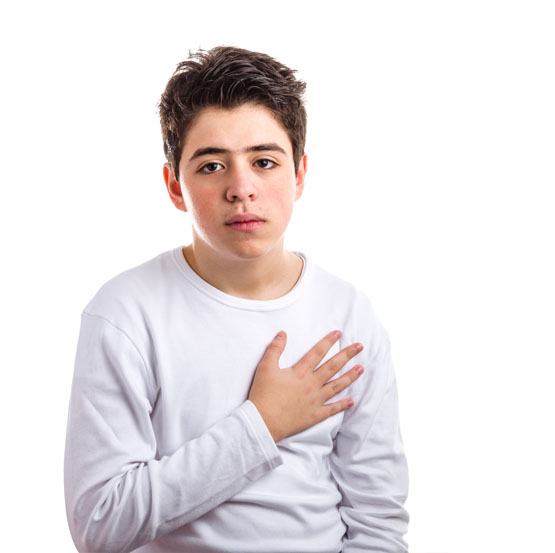Chest Pain in children and teenagers


What causes Chest Pain in children and teenagers?
Chest pain in children and chest pain in teenagers is relatively common. It frequently causes anxiety for children, parents, and grandparents. It can be due to a problem with the heart, hence a cardiac assessment is recommended. It can also be due to respiratory (breathing), musculoskeletal or other rare causes. Reassuringly most cases of chest pain in children and teenagers are benign.
Symptoms
Chest pain may occur at rest. Usually the cause is not cardiac. However, if the chest pain is associated with any of the following – fainting, fever, sweating, a severe pain, a ripping sensation in the chest, a fast heart rate, difficulty in breathing or pallor or if there is a family history of dissection or Marfan syndrome – get immediate medical help, call an ambulance without delay. Chest pain associated with exercise must always be assessed by a doctor.Diagnosis
Dr Naqvi advises that it is helpful to obtain as much information as possible regarding cardiac problems running in your child’s family. Please bring this with you to your appointment. A clinical examination, an ECG and echocardiogram ,will be performed. If chest pain is occurring on exercise then an Exercise Test will also be advised.

Treatment
If no cardiac cause is found and the cause is believed to be musculoskeletal, then simple painkillers will be recommended. If a cardiac cause is found, then treatment will vary with the condition.Prognosis
Most cases of chest pain resolve spontaneously with time.
Heart murmurs are very common in children. They are extra noises from the heart, heard with a stethoscope. They may represent an underlying heart problem or may be a normal finding (innocent). They are frequently heard incidentally when a child is taken to the GP or another doctor for a different reason e.g. a fever. A child with a heart murmur is usually assessed with a clinical examination followed by an echocardiogram (heart ultrasound) and ECG.

Disclaimer: The opinions and facts shown in this article are as accurate and up to date as possible, but are provided as general “information resources”, which may not be relevant to individual persons. This article is not a substitute for individual assessment and always take advice from a paediatric cardiologist who is familiar with the particular person.


